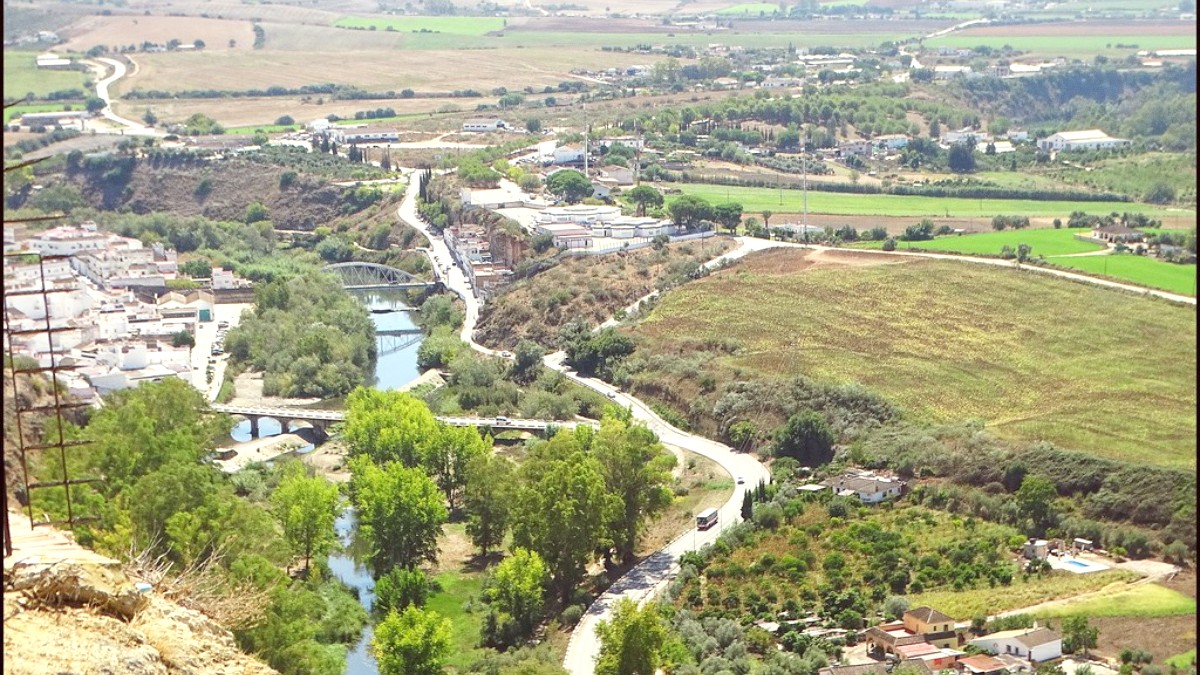
Andalucia, Spain
Andalusian cuisine bears heavy influence from its Moorish and Roman past. The Moors brought new ingredients like rice, citrus, and spices.
The coast (Bay of Cádiz) sources fresh seafood. Surrounding countryside gives game meats, olives, and produce. Sherry wine from Jerez also factors, both as a drink and ingredient. Tapas culture deeply permeates Spanish dining.
Arcos is on the edge of the Sherry Triangle, so sherry a prominent role in local cuisine and culture.
Dishes often highlight local produce and game from Sierra de Grazalema Natural Park. Hearty stews are common.
Order a few tapas to share. Then consider a "media ración" or "ración."
Cold, refreshing tomato-based soups, perfect for summer. Salmorejo is thicker and creamier, often with Jamón Ibérico.
Find these in almost any traditional restaurant.
Assorted lightly battered fried fish and thin slices of fried pork belly, a Cádiz specialty. Served as tapa or ración.
Look for coastal-influenced eateries or local bars.
Slow-cooked oxtail stew, incredibly tender and rich. Berza Arqueñan is a local chickpea and meat stew.
Ideal for meat lovers, common in traditional mesones and restaurants.
Fried dough pastries, typically for breakfast or afternoon snack, served with thick hot chocolate for dipping.
Traditional sweets and pastries made by cloistered nuns, often sold directly from convents.
Restaurante del Parador de Arcos gives high-quality Andalusian cuisine in an elegant setting with panoramic valley views.
Numerous restaurants in both old and lower town, balancing quality, atmosphere, and price.
Tapas bars give the best way to eat on a budget while sampling many local flavors.
Vegetarian options are increasingly available. Many traditional tapas are vegetarian (e.g., patatas bravas, Spanish tortillas, salads). Vegan options are possible.
Ask for "sin queso" (no cheese) or "sin huevo" (no egg). Focus on vegetable-based stews and salads.
Halal and kosher food options are limited in Arcos de la Frontera due to its size.
Larger cities like Seville or Málaga give more choices for these diets.
Awareness grows. Some menus mark "sin gluten" options. Use Spanish phrases.
Clear communication with staff is helpful for specific needs.
A risk in smaller kitchens. Consider cooking some meals yourself.
Bring a Translation card for severe restrictions.
Enjoy a meal at a restaurant with stunning valley views, like the Restaurante del Parador, a memorable experience.
Prime for photos and scenic appreciation.
Purchase traditional sweets directly from cloistered nuns via a revolving hatch at Convento de las Mercedarias Descalzas.
A unique cultural and culinary interaction, using centuries-old recipes.
Many small bars and restaurants in the old town have charming terraces or balconies.
Spanish dining can be lively and loud, especially in tapas bars, which serve as social hubs.
Formal community tourism programs are less common. Support local businesses, market vendors, and family-run restaurants.
No major language schools operate in Arcos for tourists. Larger cities like Cádiz, Jerez, or Seville have structured language learning options.
Regular tourist-focused workshops are limited. Local artisans may offer demonstrations (e.g., ceramics). Inquire at the Arcos Tourist Office.
A profound cultural experience. Accommodation books up quickly during this period (late March/early April).
Plan well in advance for Holy Week.
This municipal theater hosts various cultural events throughout the year. It presents concerts and theatrical performances.
Check local listings for current programming during your visit.
Directly supporting local families and businesses enriches your experience.
Interacting with locals respectfully deepens your cultural connection.
The Arcos Tourist Office can offer details on local guided tours and events.
Exploring smaller, local bars slightly off the main tourist routes often gives more authentic experiences and better value for tapas.